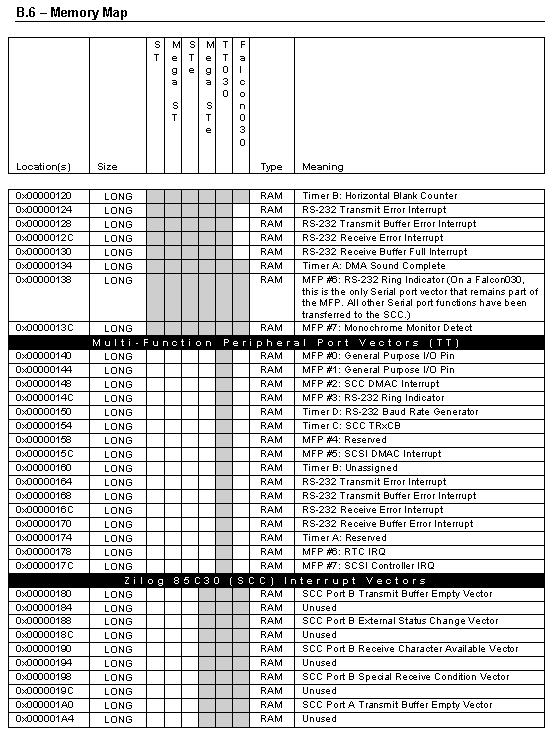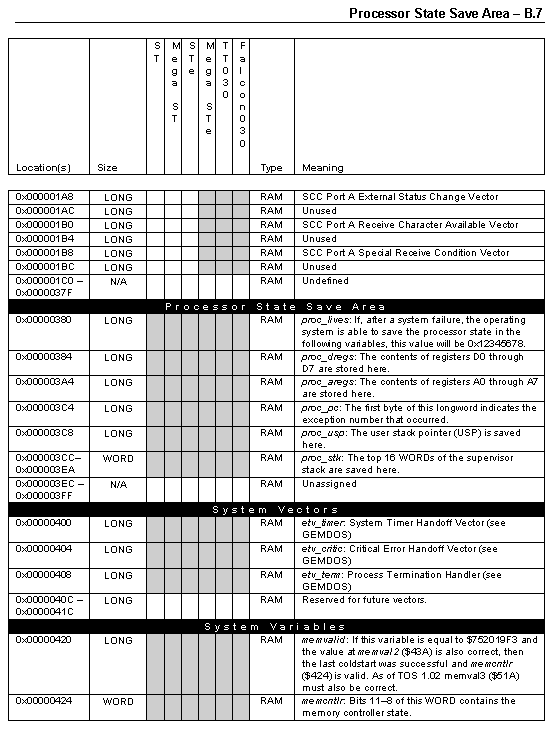



- APPENDIX B -
The information in this appendix provides a useful reference to
the memory locations of the Atari computer series. While most
documented locations have stayed backwardly compatible, some have
changed in meaning. Software programmers directly accessing these
locations should carefully consider the possibility that a location
may move or not even exist in a newer version of the OS. For this
reason many OS functions exist to manipulate system variables,
vectors, interrupts, and devices. These should always be used,
if possible, as an alternative to directly accessing hardware
registers, vectors, interrupts, and variables.
In addition to those considerations mentioned above, directly
accessing hardware registers can cause damage to hardware if not
done correctly. In particular, improper use of the Falcon030 video
registers could damage an attached monitor. Likewise, use of the
floppy and hard drive registers can cause data loss and drive
damage. For these reasons, it is strongly recommended that you
avoid using hardware registers when possible, and when otherwise
unavoidable, they should be used with extreme care.
For each Atari computer that a specific hardware location is valid
for, the appropriate box will be shaded. Following is a key to
several abbreviations and concepts used in this guide:
MEMORY MAP
Usage
WARNING!
Memory Map Conventions
|
| Occupies one byte (8 bits). |
|---|---|
|
| Occupies one WORD (16 bits). |
|
| Occupies one longword (32 bits). |
|
| Occupies the odd WORD of a LONG. |
|
| Occupies the even WORD of a LONG. |
|
| Occupies the odd BYTE of a WORD. |
|
| Occupies the even BYTE of the WORD. |
|
| Location is Read-Only Memory |
|
| Location is Read-Write Memory |
|
| Location is hardware-mapped |
|
| Location addresses VME address space |
|
| Not applicable |
|
| Read-only location |
|
| Write-only location |
|
| Read-write location |
|
| Reserved |
|
| Either not assigned or undocumented (hardware developers should always consult Atari before mapping a third-party device to a hardware location). |



